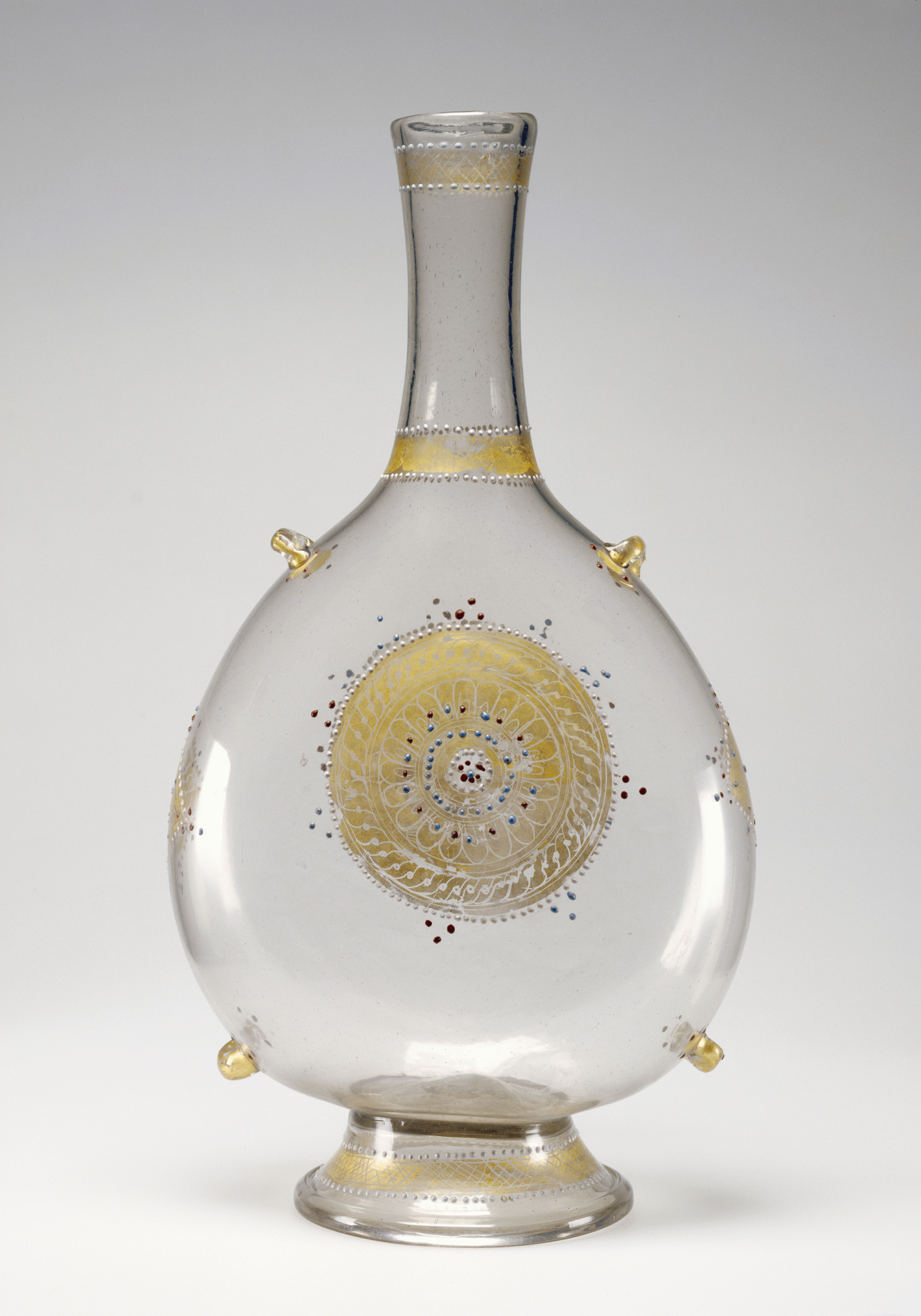4A Lab Seminar
Emily Hyatt: "Sì in Muran come fuora de Muran:" Material Histories and Imbricated Agency in the Production of Early Modern Venetian Glass

Pilgrim Flask, late 15th or early 16th century, Free-blown colorless (slightly pink) glass with gold leaf, enamel, and applied decoration; Jean Paul Getty Museum, Los Angeles.
In chapter twenty-nine of his 1564 work Dello specchio di scientia universale, the Italian traveler and physician Leonardo Fioravanti praises the work of the glassworkers of Murano. “Nowhere else in the world,” he declares, “has thus far been able to make this art in such perfection,” an achievement he credits to not only the supreme technical skill (artificio) of its artisans, but also to Venice’s “lagoons of salty water,” “plant ashes brought from Syria,” and the “very fine wood” shipped from the forests of the Republic’s inland colonies. However, just as Fioravanti insists that “this art cannot be achieved anywhere else,” he also promises to reveal “all the causes” of this glass’s beauty, and, what’s more, to show “how it could be done in other places.” Taking Fioravanti’s contradiction as a starting point, Emily Hyatt unpacks the tension between material “myths” present in the historiography of early modern (c. 1450–1600) Venice-made glass and the material’s expansive, polyvalent, and agentive journeys. Through tracing the itineraries of the raw materials of vitrum blanchum and vetro cristallo and by mapping their production within the node of the glass workshop, she relocates early modern Venetian glass within a broader provenance and proposes a polytemporal, multi-nodal, and transcultural mode of interpretation.
Emily Hyatt holds an MA in Transcultural Studies from Heidelberg University (2021) within the focus area “Visual, Media, and Material Cultures.” Her research interests include materiality, 16th-century artisanal practice, the use of plants and animals in the transmission of knowledge within the workshop, and visual culture in early modern Venice. She currently works as scientific coordinator for “Heritage as Placemaking: The Politics of Solidarity and Erasure in South Asia,” a trans-regional research project between Heidelberg University, South Asian University (Delhi), Social Science Baha (Kathmandu), and SOAS University of London. She also holds a bachelor’s degree in art history and studio art, with an emphasis on the history and practice of intaglio printmaking.
15 November 2021, 4:00pm
Villa Parey
Sigismundstr. 4
10785 Berlin
Notice
This event will be documented photographically and/or recorded on video. Please let us know if you do not agree with the Kunsthistorisches Institut in Florenz using images in which you might be recognizable for event documentation and public relation purposes (e.g. social media).


